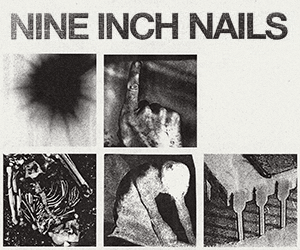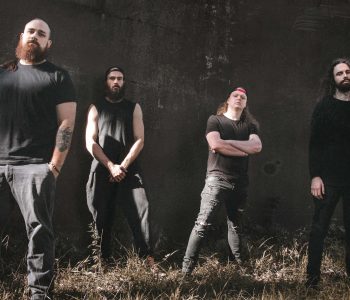As Flaming Wrekage’s brutal fourth album tickles your earholes, you know this is something special. …
Inspiration can appear in the strangest places. For Swiss-American musician Manuel Gagneux, it was a dare on the website 4Chan.
MORE: #REALTALK: Actually, Punk Is Doing Just Fine // CANCER BATS: Bat To The Future // #REALTALK: Punk Is Dead (For Real) REVIEW: ZEAL & ARDOR: Stranger Fruit // HIGH TENSION: Purge
He asked other users for ideas on genres to merge, and one responded with a suggestion that piqued Gagneux’s interest: black metal and the blues, or as the user put it, n*gg** music. The son of a Swiss biologist father and African-American jazz singer mother, he didn’t let the latter description offend, instead taking on the challenge. From that, Zeal & Ardor was born. On his second album, Stranger Fruit, Gagneux has taken that winning formula to greater heights.
“I see [debut album] Devil Is Fine more as a proof-of-concept now more than anything else,” he says. “I’ve had the opportunity now to think about what I wanted to make musically, and also have the time to hone in sonically on what that’s supposed to be.”
There are a number of notable differences between Zeal & Ardor’s two albums. Unlike his lo-fi debut, the drums blast from the speakers, and the scratchy black metal guitars now sound like an ocean roar. “This time I had to admit that I’m probably not the best producer in the whole wide world,” he says. “I had the help of Zebo Adam, who co-produced the record with me. And, of course, [Converge guitarist Kurt Ballou], who mixed the record and has a vicious fucking inkling for this.”
Amongst the bigger sound, Gagneux also found room to introduce new sounds across the album, most notably piano. Rather than tinkling in the background, it is mercilessly pummelled like Tom Waits on tracks like Gravedigger’s Chant. “Tom Waits is actually a huge influence on me,” he admits. “Rain Dogs is one of my favourite albums ever, actually. The thing is I’ve always played piano and it just felt natural to incorporate that into the record. It’s not actually a jump that I made deliberately. It felt natural and I didn’t censor myself with that. So, I thought, ‘Why not piano?”
I didn’t want to do the typical metal thing where it’s like ‘Satan’ and ‘Blood’ and ‘Sacrifices
[ Manuel Gagneux ]
An unusual addition is the poppy synthesizer instrumentals–influenced by synth pioneer Wendy Carlos—that appear throughout; a stark contrast to the black-metal/blues hybrid sound. But like some metal is rumoured to be, those instrumentals have a hidden satanic element. “They both incorporate the tritone, which in medieval time it was the interval of the devil, so there’s a vague satanic vibe to them. It kind of works, I think.”
When Gagneux explained how deep the devil runs through the album, I was curious about other complications. For starters, the blues and work songs have deep roots amongst African-Americans, while black metal has an extremely racist history. One particular figure prominent in our discussion was Varg Vikernes, the black metal musician also known as Burzum. Along with his 15 years of incarceration for the arson of three churches and the murder of Mayhem guitarist Euronymous, Vikernes once identified as a Nazi and still holds white nationalist views.
“Personally, I’ve always listened to Emperor, Burzum, and Darkthrone. I probably should explain that I separate the art from the artist, especially with Burzum’s Varg Vikernes because he’s pretty close to what we would consider to be a fascist. I know he’s a horrible person, but I do enjoy the music.
“One of the M.O.s of black metal back in the day was to distance itself as far as possible from the ‘negro’ influence,” he explains. “To bring that back into that music feels kind of like coming full circle and it has given a weird satisfaction for me, personally.”
Gagneux reckoned with the distasteful elements of black metal by creating a backstory for his concept, speculating what music of African-American slaves if they embraced Satan in rebellion of their Christian captors. Inspiration came from the Pulitzer Prize-winning 2016 novel Underground Railroad by Colson Whitehead, an alternative history of the 1800s network of secret routes and safe houses, but depicted as a literal underground railroad.
The story of this fictional rebellion by Satanist slaves appears throughout the album. In Ship Of Fire Gagneux howls “You better run, son!” And in Row Row he grunts “We are the slaves to none!” But one lyrical motif that appears throughout is fire. However, rather than conjuring images of hell breaking loose, this fire has a different purpose.
“I didn’t want to do the typical metal thing where it’s like ‘Satan’ and ‘Blood’ and ‘Sacrifices’,” he says. “In religious texts, fire plays a heavy role in terms of cleansing. There’s a liberating and very pure sense to fire. For me, the album is kind of about departure and not being able to go back, and fire is kind of the epitome of that. Once the fire starts, there’s no stopping it. There’s certainly no reversing what happened because of the fire. It has a parallel to departure.”
Mistaking my attentive silence for confusion, he laughs, “I know that sounds pretentious as fuck, but I’m standing by it”.





